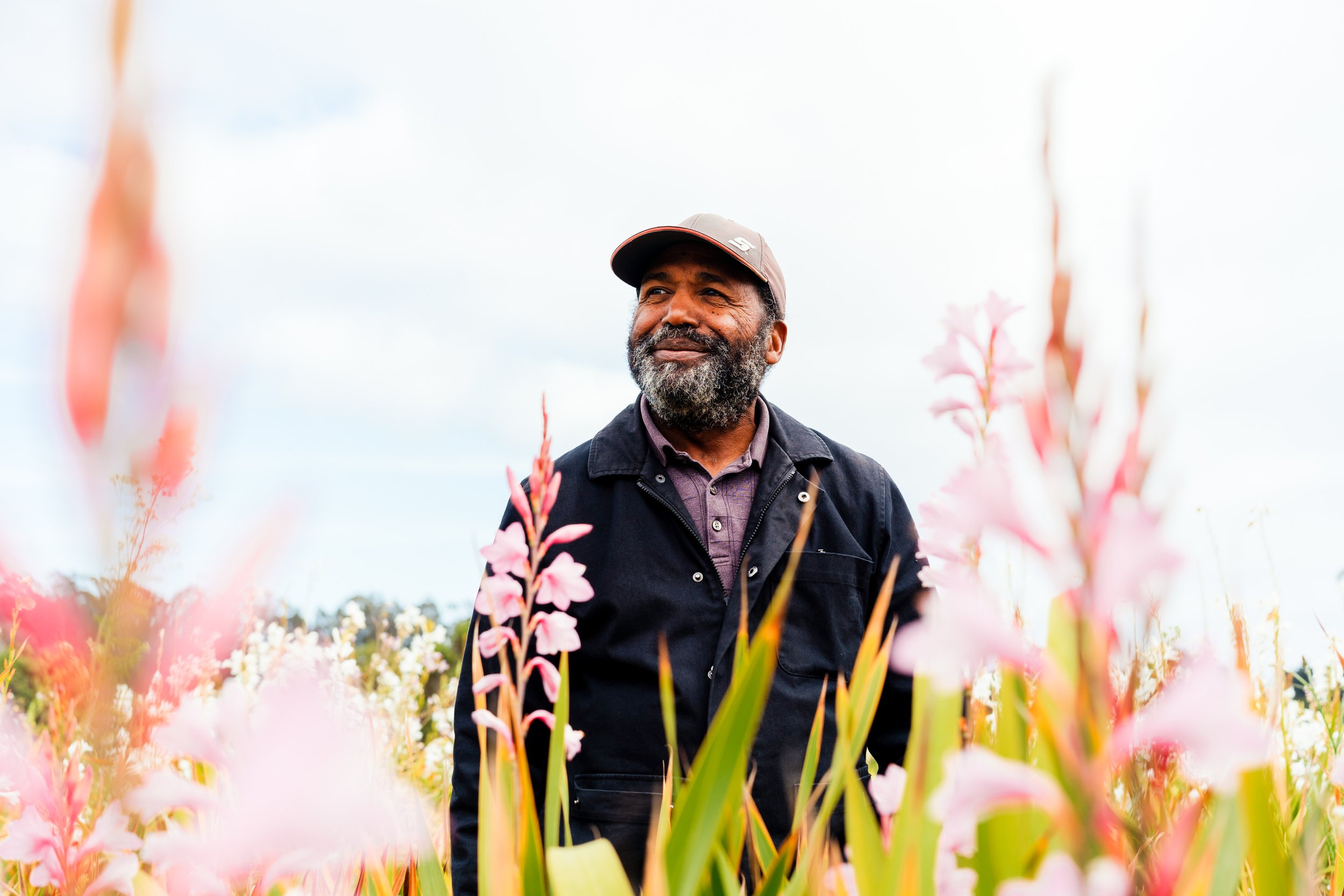
Theory of Change
Collective action and regenerative food systems can restore the climate. Read more in our position paper: “Collective Regeneration to Accelerate the Shift in Agriculture.”
Why farming?
Changing farming gives us better food, thriving farms, and a restored climate.
Carbon is the building block of all life; everything that has ever been alive is made of carbon. But because burning fossil fuels pumps too much carbon into the air, it’s become the “bad guy” in the fight against climate change. Atmospheric carbon is just in the wrong place at the wrong time. Carbon is the essential ingredient for healthy soil. In the never-ending cycle of life and death, soil microorganisms feed on carbon-rich organic matter and, in doing so, build fertile topsoil. When this is done on a massive scale, with help from regenerative agriculture principles, soil can store a shit-ton of carbon. That’s why scientists are now recognizing regenerative agriculture as one of the most effective tools we have in the fight against climate change.
By implementing regenerative farming practices, we can transform our food system from extraction and degeneration to restoration and regeneration.
-
Practices like compost application, reduced tillage, cover crops, and prescribed grazing mimic natural processes that build healthy soil. We could nerd out all day on things like microbial necromass and the accrual of heavy fraction and occluded carbon (check out Anthony Myint’s position paper!), but you can think of regenerative farming practices like planting trees. Instead of all of the carbon being stored in a tree trunk, the action happens underground with roots and microbes.
There is still debate about exactly how much carbon our soils can draw down, but even conservative estimates (restoring the CO2e released, or the 489 gigatons estimated by Project Drawdown), are big wins for the climate– and that means big wins for all of us! -
Regenerative agriculture prioritizes soil health by incorporating practices such as composting, reduced or no tillage, cover cropping, crop rotations, and rotational grazing. Rooted in Indigenous ecological knowledge, this way of farming recognizes that the health of people and our planet begins with healthy soils.
Recent research shows that these practices are directly linked to the quality of our food, which means better nutrient density and benefits to public health.Read more about the Heath Impacts of Regenerative Agriculture
-
Building healthy soil on farms has many benefits beyond carbon sequestration. Regenerative farming practices are linked to increased biodiversity, better water management, and better environmental resiliency.
Healthy soil is created when farmers implement regenerative practices like cover cropping, rotational grazing, reduced tilling, and compost application.
During photosynthesis, plants absorb bad carbon from the atmosphere and turn it into sugar to grow. Those sugars are pumped to the roots to feed microorganisms.
Microorganisms eat and feed the soil which sustains their growth and carbon is sequestered and stored underground for decades, even centuries!
Like many people trying to create a better food system, we spent years thinking that changing eating would be the fastest path to change farming. We were stuck on conventional models that assume farmers can shoulder the costs of implementing sustainable farming practices if we create demand and price premiums for sustainably grown ingredients. But that’s not the case. After over 50 years of clear market signals, less than 1% of agricultural land is certified organic.
Instead of relying on the evidently ineffective market signals of price premiums, Zero Foodprint integrates collective funding across food system sectors to directly change farming.
Read More in Part 1 of Collective Regeneration to Accelerate the Shift in Agriculture by Founder and Executive Director Anthony Myint.
Collective

Regeneration
A scalable model
We can grow better food and restore the climate by directly and proactively paying to change farming. While it might seem challenging to generate those funds, it turns out people and organizations are willing to finance solutions through collective action. An overwhelming body of market research shows that most consumers will pay at least 1% more for climate solutions, and most studies reflect a willingness to pay 10%-35% more for more sustainable choices. This demand can and must be leveraged for greater impact through collective regeneration.
This vision builds on the strength of public-private collaborations, and the mechanisms to increase scale are already at our fingertips.
Read More in Parts 2 and 3 of Collective Regeneration to Accelerate the Shift in Agriculture.

